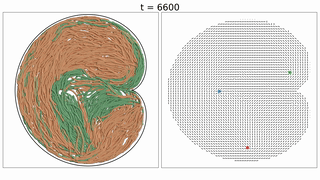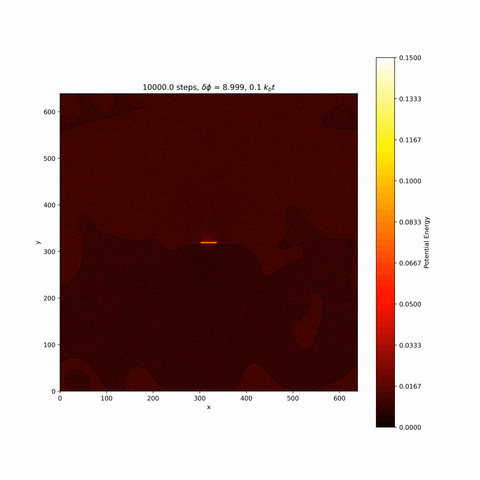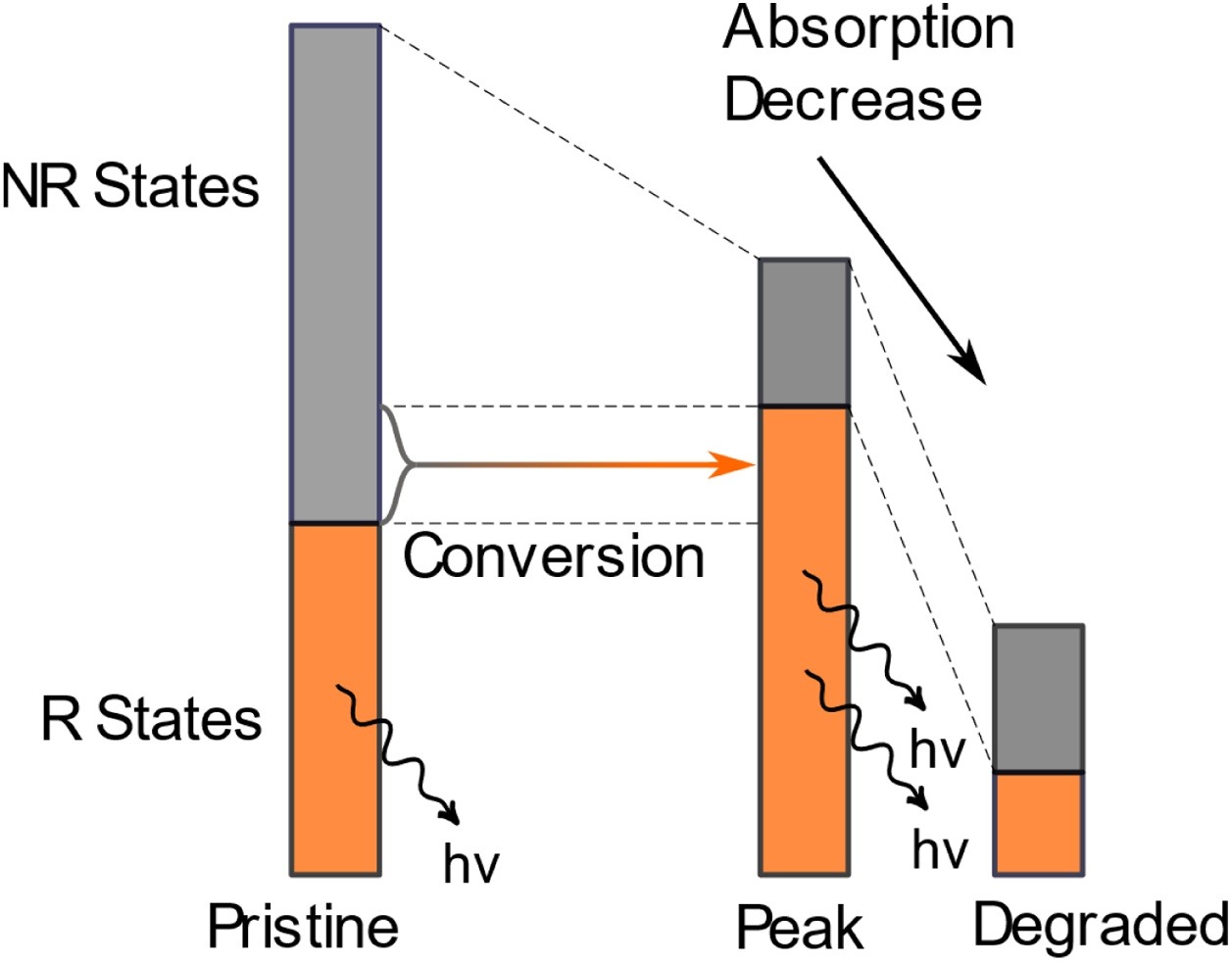My Research
Google Scholar
0000-0002-6915-2454
Spontaneous Optimal Mixing via Defect-Vortex Coupling in Confined Active Nematics
- Brandon Klein, Alejandro J. Soto Franco, Md Mainul Hasan Sabbir, Matthew J. Deutsch, Robin L. B. Selinger, Kevin A. Mitchell, Daniel A. Beller. "Spontaneous Optimal Mixing via Defect-Vortex Coupling in Confined Active Nematics." arXiv:2503.10880 2025
Active nematic flows in two dimensions, largely driven by motile +1/2 disclinations, mix themselves efficiently and exhibit chaos in the bulk steady state. Motivated by recent experimental findings for three-defect braiding in cardioid-shaped domains, we investigate how this tendency toward chaotic fluid mixing can, counterintuitively, produce certain ordered, periodic flows in confinement with a controllable net topological charge. We study two-dimensional active nematics in systems with boundary conditions requiring a prescribed number of excess +1/2 disclinations, using Beris-Edwards nematohydrodynamics simulations, alongside an agent-based, hydrodynamic simulation approach. We find ordered flows for systems of three and four defects, and we use tools from braid theory to show that spontaneously occurring periodic defect motions produce maximal topological entropy. Our theory correctly predicts the generic absence of stable periodic orbits of more than four defects in strong confinement in simulation. Our results identify the parameter regime outside of which periodicity is lost, and allow us to probe the limits of topological entropy production.

Frank-read mechanism in nematic liquid crystals
- Long, Cheng, Matthew J. Deutsch, Joseph Angelo, Christopher Culbreath, Hiroshi Yokoyama, Jonathan V. Selinger, and Robin LB Selinger. "Frank-read mechanism in nematic liquid crystals." Physical Review X 14, no. 1 (2024): 011044.
In a crystalline solid under mechanical stress, a Frank-Read source is a pinned dislocation segment that repeatedly bows and detaches, generating concentric dislocation loops. We demonstrate that, in nematic liquid crystals, an analogous Frank-Read mechanism can generate concentric disclination loops. Using experiment, simulation, and theory, we study a disclination segment pinned between surface defects on one substrate in a nematic cell. Under applied twist of the nematic director, the pinned segment bows and emits a new disclination loop which expands, leaving the original segment intact; loop emission repeats for each additional 180° of applied twist. We present experimental micrographs showing loop expansion and snap-off, numerical simulations of loop emission under both quasistatic and dynamic loading, and theoretical analysis considering both free energy minimization and the balance of competing forces. We find that the critical stress for disclination loop emission scales as the inverse of segment length and changes as a function of strain rate and temperature, in close analogy to the Frank-Read source mechanism in crystals. Lastly, we discuss how Frank-Read sources could be used to modify microstructural evolution in both passive and active nematics.

Internal and external quantum yields enhancement in BDMO-PPV by intense illumination
- Deutsch, M. J., and H. Park. "Internal and external quantum yields enhancement in BDMO-PPV by intense illumination." Synthetic Metals 269 (2020): 116548.
Poly-2,5-bis(3′,7′-dimethyloctyloxy)-1,4-phenylenevinylene (BDMO-PPV) is a photoluminescent semiconducting polymer related to others in the well-studied polyphenylene vinylene family such as poly-2-methoxy-5-(2-ethylhexyloxy)-1,4-phenylenevinylene (MEH-PPV). These materials are known for their instability, degradation, and low efficiency in device operations. We report increased internal and external quantum yield in BDMO-PPV during continuous illumination photodegradation through variations in absorbance, scattering, reflectance, and transmittance of the BDMO-PPV solution. We propose the creation of a highly emissive intermediate photoluminescent state responsible for these increased quantum yields.

